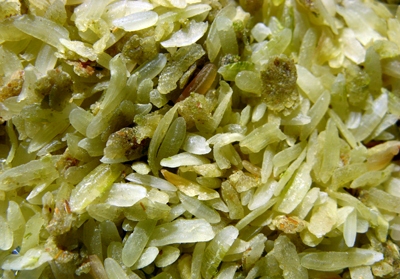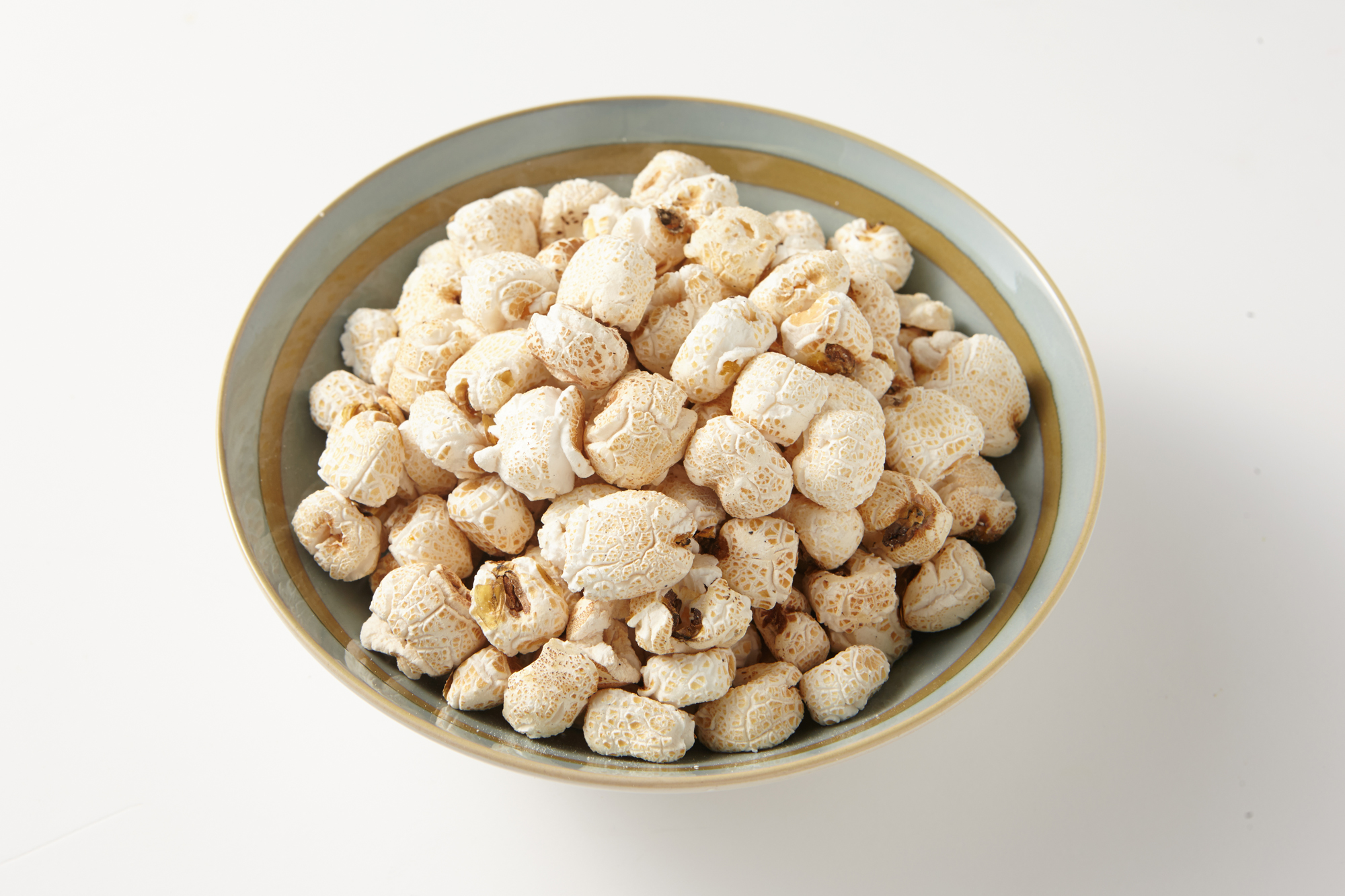|
Ampaw
Ampaw, ampao or arroz inflado, usually anglicized as pop rice or puffed rice, is a Filipino sweet puffed rice cake. It is traditionally made with sun-dried leftover cooked white rice that is fried and coated with syrup. Etymology ''Ampáw'' means " puffed grain" in Philippine languages. Though it applies predominantly to the rice version, popcorn can also be referred to as ''ampáw'' (more accurately as ''ampáw na mais'', "puffed corn"). In Cebuano slang, ''ampáw'' is also a euphemism roughly equivalent to the English idiom " personfull of hot air".The term is derived from Proto-Malayo-Polynesian *ampaw (“empty husk (of rice, etc.)”). Another Filipino word, ''ampaw (also spelled as angpao'' or ''ampao'', from Philippine Hokkien ), referring to Chinese red envelopes should not be confused with this term, as they are homonyms. Description Ampaw is made with cooked white rice (usually leftovers). It is dried in the sun for around four hours. They are then fried in h ... [...More Info...] [...Related Items...] OR: [Wikipedia] [Google] [Baidu] |
Cebu
Cebu ( ; ), officially the Province of Cebu (; ), is a province of the Philippines located in the Central Visayas region, and consists of a main island and 167 surrounding islands and islets. The coastal zone of Cebu is identified as a site of highest marine biodiversity importance in the Coral Triangle. Its capital and largest city is Cebu City, nicknamed "the Queen (Catholic) City of the South" having the Second Cardinal, the oldest city and first capital of the Philippines, which is politically independent from the provincial government along with Mandaue and Lapu-Lapu City. The Cebu Metropolitan Area or Metro Cebu is the third largest metropolitan area in the Philippines (after Metro Manila and Metro Davao) with Cebu City as the main center of commerce, trade, education and industry in the Visayas as well as the regional center of Central Visayas. Being one of the most developed provinces in the Philippines, in a decade it has transformed into a global hub for b ... [...More Info...] [...Related Items...] OR: [Wikipedia] [Google] [Baidu] |
Puffed Grain
Puffed grains are grains that have been expanded ("puffed") through processing. They have been made for centuries with the simplest methods like popping popcorn. Modern puffed grains are often created using high temperature, pressure, or extrusion. People eat puffed grains in many ways, but it can be as simple as puffed grain alone and with sugar or salt for taste. Commercial products such as corn flakes and Corn Pops mix many ingredients into a homogeneous batter. The batter is then formed into shapes then toasted or extruded. This causes them to rise, but not puff or pop. Puffed grains can be healthful if plain, but when other ingredients are mixed with them they may lose some of their health benefits. Puffed grains are popular as breakfast cereals and in the form of rice cakes. While it is easy to recognize that cereals came from whole grains, the expansion factor for rice cakes is even greater, and the final product is somewhat more homogeneous. History In 1948 and 1950 ... [...More Info...] [...Related Items...] OR: [Wikipedia] [Google] [Baidu] |
Binatog
''Binatog'', also known as ''bualaw'' or ''kinulti'', is a Filipino boiled corn dessert topped with freshly grated coconut, butter, and salt or sugar. It is commonly sold as street food in the northern Philippines by vendors known as ''magbibinatog'' carrying characteristic large tin cans, similar to ''taho'' vendors. Description ''Binatog'' is made from dried mature Lagkitan waxy corn kernels soaked in saltwater until the kernels puff up. The kernels are then washed and boiled until very soft. They are then placed into a bowl and topped with grated coconut, butter (or margarine), and sugar to taste. Modern variants of the dish typically use canned Mexican hominy to skip the soaking process, but boiled young corn kernels may also be used. Some variants also use other toppings like coconut milk (''gata'') or evaporated milk, in which case it becomes known as ''binatog sa gata''. The iconic dish can be served in a coconut shell with coconut sorbetes Sorbetes in the Philip ... [...More Info...] [...Related Items...] OR: [Wikipedia] [Google] [Baidu] |
Pinipig
''Pinipig'' is a flattened rice ingredient from the Philippines. It is made of immature grains of glutinous rice pounded until flat before being toasted. It is commonly used as toppings for various desserts in Filipino cuisine, but can also be eaten plain, made into cakes, or mixed with drinks and other dishes. Production ''Pinipig'' is made solely from glutinous rice (''malagkit'' or "sticky" rice). The grains are harvested while still green. They are husked and the chaff is separated from the grain (traditionally using large flat winnowing baskets called ''bilao''). The resulting bright green kernels are then pounded in large wooden mortars and pestles until flat. They are then toasted dry on pans or baked until crisp. Description ''Pinipig'' are characteristically light green in color when fresh, but usually become yellowish white to brown when toasted. They superficially resemble grains of oats, and are often confused with puffed rice. The texture is crunchy on the ... [...More Info...] [...Related Items...] OR: [Wikipedia] [Google] [Baidu] |
Rice Cakes
A rice cake may be any kind of food item made from rice that has been shaped, condensed, or otherwise combined into a single object. A wide variety of rice cakes exist in many different cultures in which rice is eaten. Common variations include cakes made with rice flour, those made from ground rice, and those made from whole grains of rice compressed together or combined with some other binding substance. Types of rice cakes by region Types of rice cake include: Burmese Burmese cuisine has a variety of snacks and desserts called Mont (food), ''mont'' made with various types of rice, rice flour and glutinous rice flour. Sweet Burmese ''mont'' are generally less sweet than counterparts in other parts of Southeast Asia, instead deriving their natural sweetness from constituent ingredients (e.g., grated coconut, coconut milk, glutinous rice, fruit, etc.). Cambodian * Bánh tét#In Cambodia, Ansom chek is a banana leaf sticky rice cake. It is served all year long but it is mos ... [...More Info...] [...Related Items...] OR: [Wikipedia] [Google] [Baidu] |
Puffed Grain
Puffed grains are grains that have been expanded ("puffed") through processing. They have been made for centuries with the simplest methods like popping popcorn. Modern puffed grains are often created using high temperature, pressure, or extrusion. People eat puffed grains in many ways, but it can be as simple as puffed grain alone and with sugar or salt for taste. Commercial products such as corn flakes and Corn Pops mix many ingredients into a homogeneous batter. The batter is then formed into shapes then toasted or extruded. This causes them to rise, but not puff or pop. Puffed grains can be healthful if plain, but when other ingredients are mixed with them they may lose some of their health benefits. Puffed grains are popular as breakfast cereals and in the form of rice cakes. While it is easy to recognize that cereals came from whole grains, the expansion factor for rice cakes is even greater, and the final product is somewhat more homogeneous. History In 1948 and 1950 ... [...More Info...] [...Related Items...] OR: [Wikipedia] [Google] [Baidu] |
Philippine Snack Food
The Philippines, officially the Republic of the Philippines, is an Archipelagic state, archipelagic country in Southeast Asia. Located in the western Pacific Ocean, it consists of List of islands of the Philippines, 7,641 islands, with a total area of roughly 300,000 square kilometers, which are broadly categorized in Island groups of the Philippines, three main geographical divisions from north to south: Luzon, Visayas, and Mindanao. With a population of over 110 million, it is the world's List of countries and dependencies by population, twelfth-most-populous country. The Philippines is bounded by the South China Sea to the west, the Philippine Sea to the east, and the Celebes Sea to the south. It shares maritime borders with Taiwan to the north, Japan to the northeast, Palau to the east and southeast, Indonesia to the south, Malaysia to the southwest, Vietnam to the west, and China to the northwest. It has Ethnic groups in the Philippines, diverse ethnicities and Culture o ... [...More Info...] [...Related Items...] OR: [Wikipedia] [Google] [Baidu] |
Philippine Rice Dishes
The Philippines, officially the Republic of the Philippines, is an archipelagic country in Southeast Asia. Located in the western Pacific Ocean, it consists of 7,641 islands, with a total area of roughly 300,000 square kilometers, which are broadly categorized in three main geographical divisions from north to south: Luzon, Visayas, and Mindanao. With a population of over 110 million, it is the world's twelfth-most-populous country. The Philippines is bounded by the South China Sea to the west, the Philippine Sea to the east, and the Celebes Sea to the south. It shares maritime borders with Taiwan to the north, Japan to the northeast, Palau to the east and southeast, Indonesia to the south, Malaysia to the southwest, Vietnam to the west, and China to the northwest. It has diverse ethnicities and a rich culture. Manila is the country's capital, and its most populated city is Quezon City. Both are within Metro Manila. Negritos, the archipelago's earliest inhabitants, ... [...More Info...] [...Related Items...] OR: [Wikipedia] [Google] [Baidu] |
Philippine Desserts
This is a list of Filipino desserts. Filipino cuisine consists of the food, preparation methods and eating customs found in the Philippines. The style of cooking and the food associated with it have evolved over many centuries from its Austronesian origins to a mixed cuisine of Malay, Spanish, Chinese, and American influences adapted to indigenous ingredients and the local palate. "Philippine Cuisine." . Accessed July 2011. Philippine desserts  [...More Info...] [...Related Items...] OR: [Wikipedia] [Google] [Baidu] |
Snack
A snack is a small portion of Human food, food generally Eating, eaten between meals. Snacks come in a variety of forms including Food packaging, packaged snack foods and other processed foods, as well as items made from fresh ingredients at home. Traditionally, snacks are prepared from a number of ingredients commonly available at home without a great deal of preparation. Often Lunch meat, cold cuts, fruits, leftovers, Nut (fruit), nuts, sandwiches, and Candy, sweets are used as snacks. With the spread of convenience stores, packaged snack foods became a significantly profitable business. Snack foods are typically designed to be portable, quick, and satisfying. Food processing, Processed snack foods, as one form of convenience food, are designed to be less perishable, more durable, and more portable than prepared foods. They often contain substantial amounts of Sugar substitute, sweeteners, preservatives, and appealing ingredients such as chocolate, peanuts, and specially d ... [...More Info...] [...Related Items...] OR: [Wikipedia] [Google] [Baidu] |






